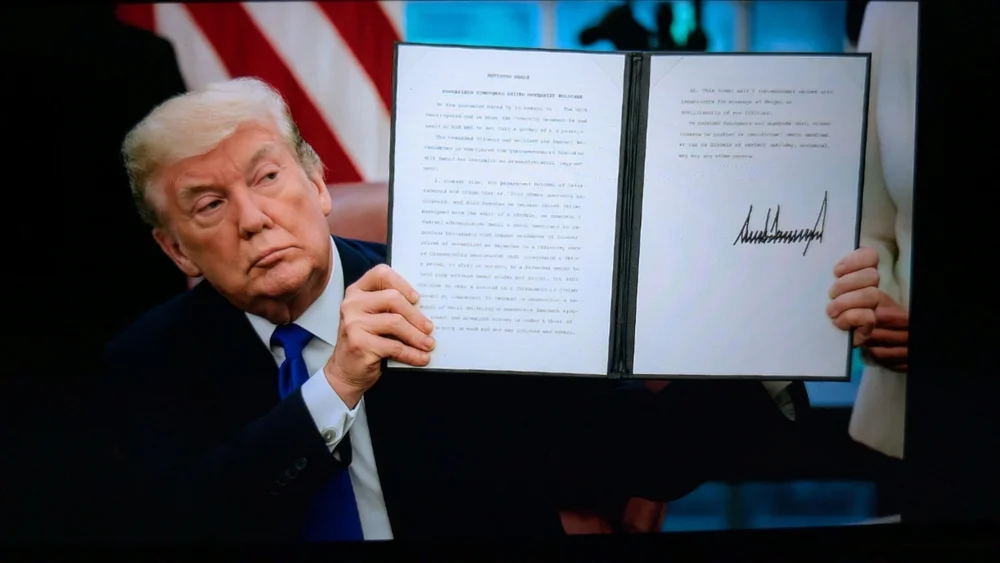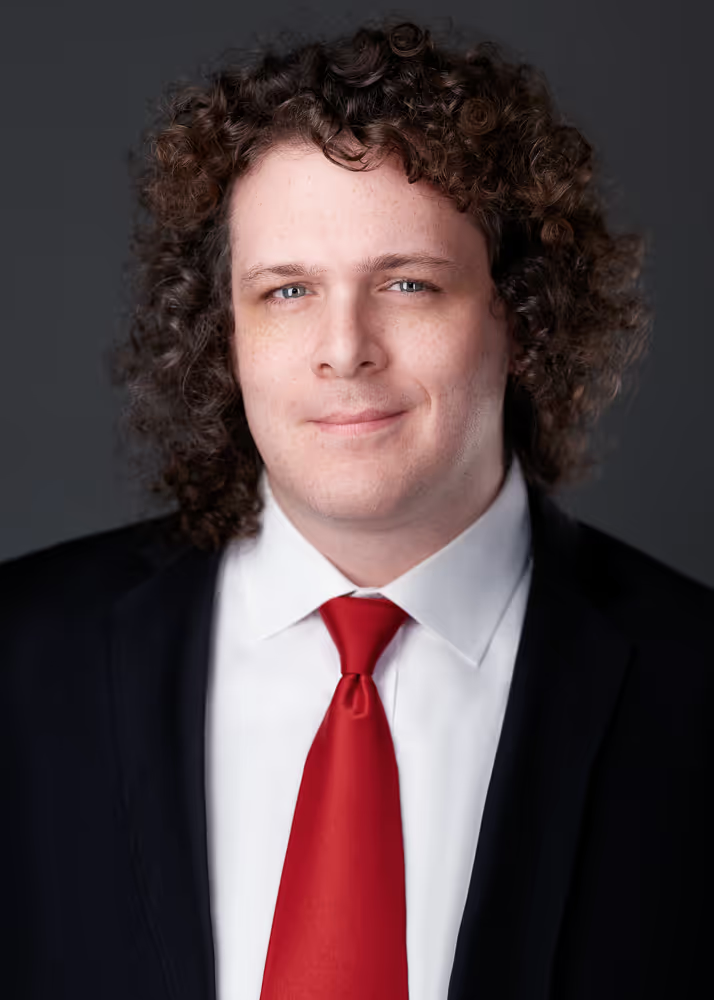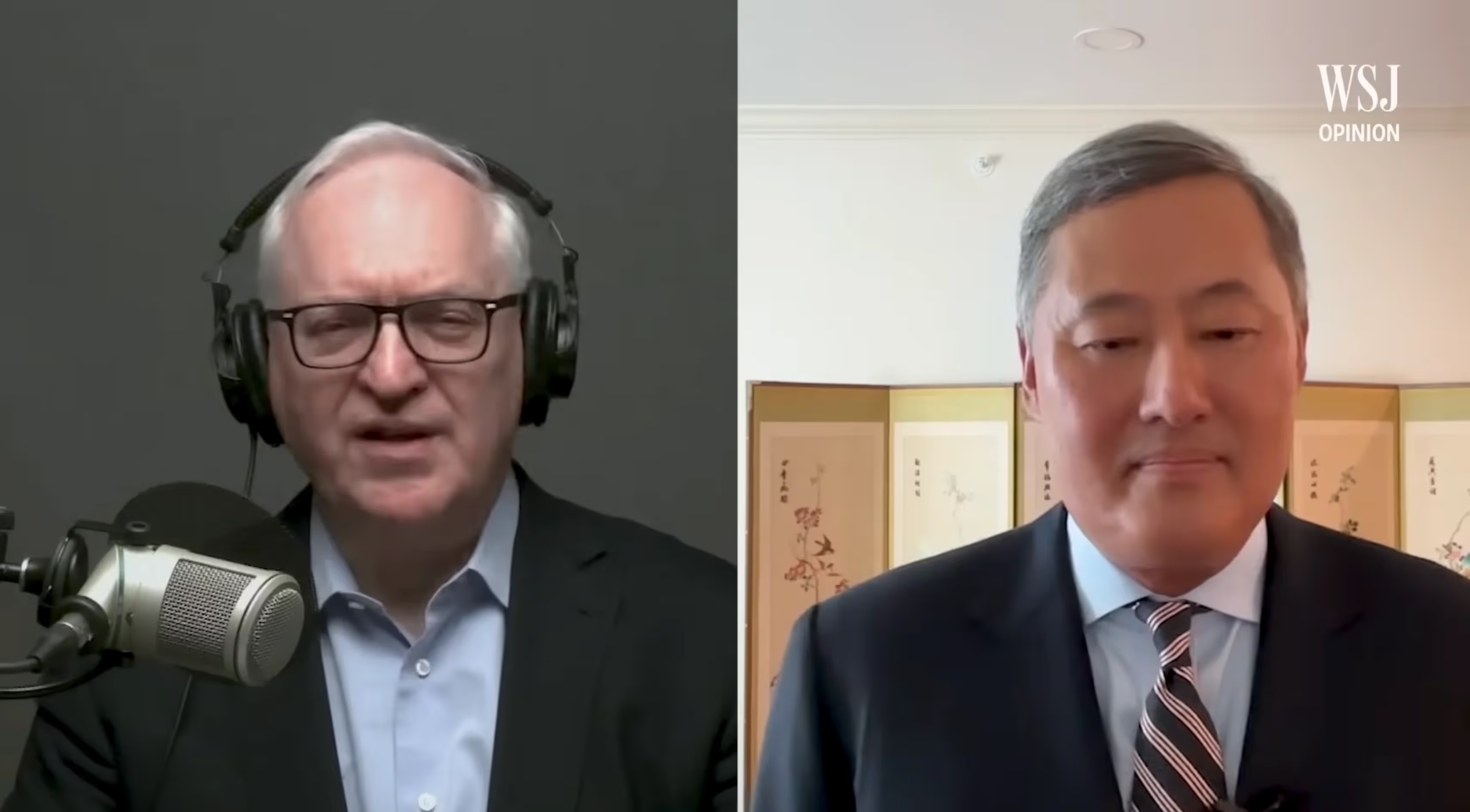
Eliminating Liberal Institutional Asymmetries
Perhaps the single greatest opportunity of our current political moment is to eliminate entrenched institutional asymmetries permanently.
During a recent event in Mississippi, a student expressed concern to Vice President J.D. Vance about what would happen when Democrats regained power. He asked, “How could we prevent someone from abusing [the type of] power” that President Trump is using? In other words, if Trump does X, what would stop a Democratic President from doing X, or worse? Vance replied, “We cannot be afraid to do something because the left might do it in the future.” He added, “The left is already going to do it, regardless of whether we do it. That is the takeaway of the last forty years.” Vance was correct and probably understated the case.
Since the New Deal, progressives have captured virtually every public institution and most private institutions in America. This result should not be surprising. O’Sullivan’s First Law proclaims, “All organizations that are not actually right-wing will over time become left-wing.” The all-too-common fear that power will be abused in the future presumes that power is not already being abused, regardless of who wins elections. When Democrats are in power, these institutions tend to instinctively support Democrats. When Republicans are in control, those institutions instinctively resist Republicans. Given these asymmetries, concerns about what would happen when the shoe is on the other foot are misplaced. Perhaps the single greatest opportunity of our current political moment is to eliminate these entrenched institutional asymmetries permanently. The political playing field should be level, allowing both sides of the political aisle to compete evenly in the arena of ideas.
The first asymmetry is the civil service. According to a 2021 study, approximately 50 percent of career civil servants are Democrats, while only 26 percent are Republicans. There are many possible reasons why the bureaucracy leans to the left. Progressives may be more public-service minded. Or Democrats tend to have more educational credentials, which could support their elevation through the civil service ranks. Frankly, the rationale doesn’t matter. The outcome is unmistakable. The same study concluded, “Given that Democrats are overrepresented among career bureaucrats, however, ideological misalignments are especially prevalent under Republican presidents.” On this front, anecdotal evidence is glaring. Ask anyone who served in the first Trump Administration, and they will relay that some bureaucrats did everything in their power to frustrate, delay, and obstruct the administration. Yet the Biden Administration faced none of these hurdles.
The second Trump Administration is taking aggressive efforts to cull the federal bureaucracy and eliminate this asymmetry. Through DOGE, reductions in force, and other efforts, departments are removing civil servants who oppose the executive’s agenda. The courts will block some of these efforts, but others will succeed.
Should conservatives be concerned about what will happen when the shoe is on the other foot? Should we worry that a Democratic President will purge the civil service of conservative employees? Not really. Conservatives tend not to take these sorts of jobs in the first place. Moreover, when given the chance, a Democratic administration will simply restock the agencies from the usual pool of applicants. Trump’s efforts here dispel the myth of a neutral civil service. The spoils system is often derided as a corrupt system of graft, but at least allowing shifts in the civil service every four years allows some accountability after elections.
Asymmetry #2 is an institution I know all too well: the academy. By virtually any measure, higher education has been captured by the left. According to a 2020 survey, less than one percent of professors in most liberal arts fields identified as Republicans. Among English professors, registered Democrats outnumber registered Republicans by a ratio of 27:1. This imbalance is increasing year over year. The second Trump Administration is taking bold steps to eliminate this asymmetry. The Department of Education is investigating colleges that failed to adequately address antisemitism, suing universities that still employ unlawful DEI policies, and ensuring that the freedom of speech is protected.
Should we worry about what a Democratic President will do to conservative institutions of higher education? Not really, because there aren’t that many. I can count on both hands the number of nationally-renowned conservative universities. To be sure, there are many smaller conservative colleges, which perform valuable functions, that could find themselves in the crosshairs of a liberal administration. But not much would be new. The Obama and Biden Administrations already tried to impose controversial policies on these schools, including affirmative action quasi-quotas, contraceptive mandates, transgender sports policies, and Title IX disciplinary rules. Trump’s efforts to reach settlements reflects a leveling-up of these powers, but I see them as a difference in degree, and not kind. In an ideal world, the federal government should refrain from funding higher education. There is too much risk of control, both express and explicit.
Conservative institutions should follow the Hillsdale model and reject all federal financial aid. They would then become largely immune to bureaucratic overreach. However, in the near term, Trump is addressing these issues as the current dynamics stand. Conservatives have more to gain through aggressive regulation of higher education than they have to lose.
The third asymmetry is the legal profession. Traditionally, lawyers have been viewed as a conservative class. But the numbers do not support this perception. More than 90 percent of Big Law campaign contributions were made to Democratic candidates. Partners at only a handful of large firms make sizable donations to Republican candidates. In high-profile Supreme Court cases, large firms filed amicus briefs on the liberal side 95 percent of the time. Even firms that have been historically friendly to conservatives have changed course. Kirkland & Ellis pushed out Paul Clement, conservative superlitigator, who just won a landmark Second Amendment case before the Supreme Court. And Hogan Lovells, which in the past employed Chief Justice John Roberts, fired a lawyer who defended the Supreme Court’s Dobbs decision. And firms routinely force their summer associates to perform pro bono work on liberal causes.
This asymmetry is not limited to law firms. The political left has captured the American Bar Association. The ABA advances ethics rules that punish conservative speech and impose unlawful DEI mandates. And law schools became hotbeds of protests and the cancellation of conservative views. Plus, barely 15 percent of law professors are conservative, compared to 35 percent of lawyers as a whole.
The Trump Administration has taken steps to eliminate this asymmetry in legal institutions. The Department of Justice reached settlements with large law firms, requiring them to perform pro bono work for conservative causes. In candor, I have some doubts about the constitutionality of some of these agreements. In an ideal world, the government would never dictate terms to private entities, but it has, unfortunately, become a common practice for the government to condition settlements on making payments for progressive causes. In the background, the federal government has pressured firms to drop support for conservative causes.
This asymmetry is not limited to the government’s regulation of law firms. The DOJ has also rejected the ABA's having any role in reviewing judicial nominees. Other components of the executive branch have barred political appointees from being ABA members. And on the state level, Texas and Florida have taken steps to eliminate the ABA’s role in law school accreditation. I expect the federal Department of Education will follow suit and eliminate the monopolies of other left-wing accrediting agencies.
What happens when the shoe is on the other foot? There are so few conservative boutique law firms that it is difficult to imagine a liberal administration having much of an impact. Law schools already skew far to the left. It is doubtful that a future Democratic administration could make the situation more skewed than it already is.
There are many other such asymmetries in our polity. The Voting Rights Act serves primarily to ensure that Democratic voters can elect Democratic representatives. In modern times, the VRA has little to do with actual racial discrimination. The medical profession and medical schools lean to the left, and became substantial allies to Democratic politicians concerning transgender medicine, and during the pandemic. Same for the press. Barely three percent of journalists are self-identified Republicans. Outside of houses of worship and some think tanks, there are few institutions where conservatives have control. And you wonder why religious liberty and funding for these groups are under constant attack?
I will mention one other asymmetry that, fortunately, is decreasing. Since the New Deal, the Supreme Court leaned to the left. Even when the Court had a majority and a super-majority of Republican-appointed members, leading decisions still hewed to a progressive elite conception of justice. When the Court’s moderates voted with the right, there were incremental changes that had little practical impact on most Americans. But when the Court swung left, the Justices issued sweeping rulings on abortion, gay rights, the death penalty, criminal rights, and countless other areas. Fortunately, this asymmetry is eroding.
Through the pathbreaking efforts of the Federalist Society, there is now an alternate legal culture for conservative lawyers grounded in constitutional originalism. And, due in large credit to President Trump and Senate Republicans, the Supreme Court and lower courts are now stacked with committed originalist jurists. In some cases, these jurists will push back on unlawful actions by this and future administrations. But in the long run, I see positive trends for the restoration of constitutional governance. There is much work to do, but progress is being made.
In the inaugural issue of National Review, William F. Buckley, Jr., wrote that modern conservatism “stands athwart history, yelling Stop, at a time when no one is inclined to do so, or to have much patience with those who so urge it.” The work of the Trump Administration is not simply about yelling stop. Trump is using his powers to stop these institutions. To further the analogy, Trump is pulling the emergency brake, switching the tracks, changing the train’s direction, throwing a mountain of coal into the fire, and smashing into the liberal institutions. I don’t think we should worry too much about what happens when the shoe is on the other foot. At worst, these institutions will simply reconstitute in their pre-Trump form and try to rebuild their progressive asymmetries.
For now, the only way to advance conservatism is to eliminate liberal institutional asymmetries.
Josh Blackman holds the Centennial Chair of Constitutional Law at the South Texas College of Law Houston, is the Senior Editor of The Heritage Guide to the Constitution (Third Edition), and is a contributing editor to Civitas Outlook.
Politics
.webp)
Liberal Democracy Reexamined: Leo Strauss on Alexis de Tocqueville
This article explores Leo Strauss’s thoughts on Alexis de Tocqueville in his 1954 “Natural Right” course transcript.
%20(1).avif)
Long Distance Migration as a Two-Step Sorting Process: The Resettlement of Californians in Texas
Here we press the question of whether the well-documented stream of migrants relocating from California to Texas has been sufficient to alter the political complexion of the destination state.
%20(3).avif)
Who's That Knocking? A Study of the Strategic Choices Facing Large-Scale Grassroots Canvassing Efforts
Although there is a consensus that personalized forms of campaign outreach are more likely to be effective at either mobilizing or even persuading voters, there remains uncertainty about how campaigns should implement get-out-the-vote (GOTV) programs, especially at a truly expansive scale.

California job cuts will hurt Gavin Newsom’s White House run
California Governor Gavin Newsom loves to describe his state as “an economic powerhouse”. Yet he’s far more reluctant to acknowledge its dramatically worsening employment picture.

An anti-woke counter-revolution is sweeping through the media
From Hollywood to the newsroom, the hegemony of the ‘progressives’ is finally faltering.

The Family Policy Symposium
How should we approach the problems of family formation and fertility decline in America?

How States Can Help Families
When it comes to daily life, states can – and should – experiment with different approaches to centering families’ needs in public policy.




%20(1).jpg)









